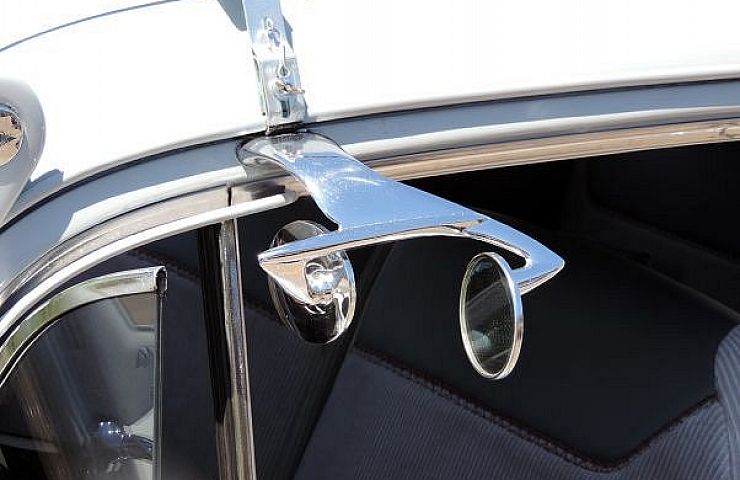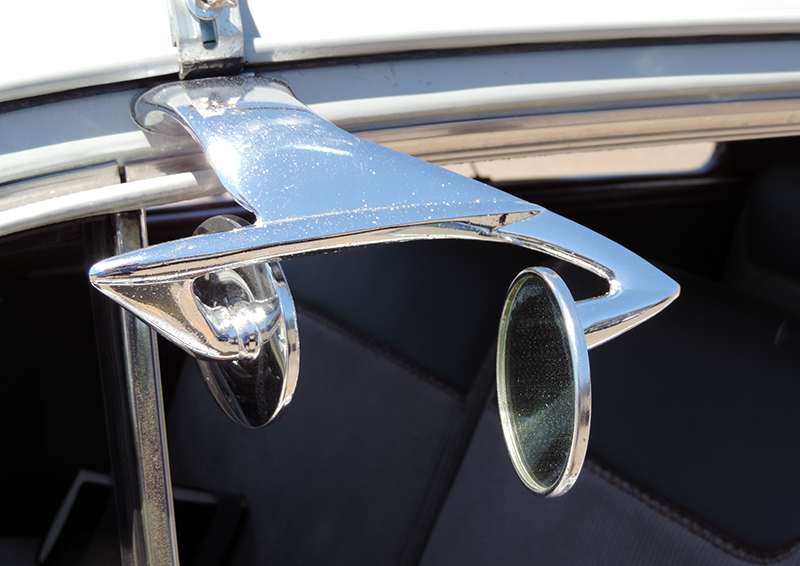The automotive side-view mirror had different names over time and was placed in different locations. There was the fender mirror, wing mirror, and door mirror—all describing the essential driving aid for knowing what’s happening in an adjacent lane. Now, in the age of high-tech car, the side-view mirror will either be augmented or replaced by cameras.
The history of the rear-view mirror can be traced back to 1911 when Ray Harroun famously equipped his Marmon race car with a mirror at the Indianapolis 500. That kicked out the riding mechanic from the passenger seat.
Elmer’s Cop Spotter
The first patent for the car mirror was given to Elmer Berger in 1921—so he is commonly considered the inventor of the device. (By the way, Berger marketed the mirror as a “cop spotter.”)
During that era, most of America’s so-called highways were just two lanes. The need for side-view mirrors was minimal. As a result, they were considered a luxury. Side mirrors were often mounted to the front fenders and side mounted spare tires. They were also mounted on the top of the driver’s door frame. Now they are most often positioned near a car’s A pillar.
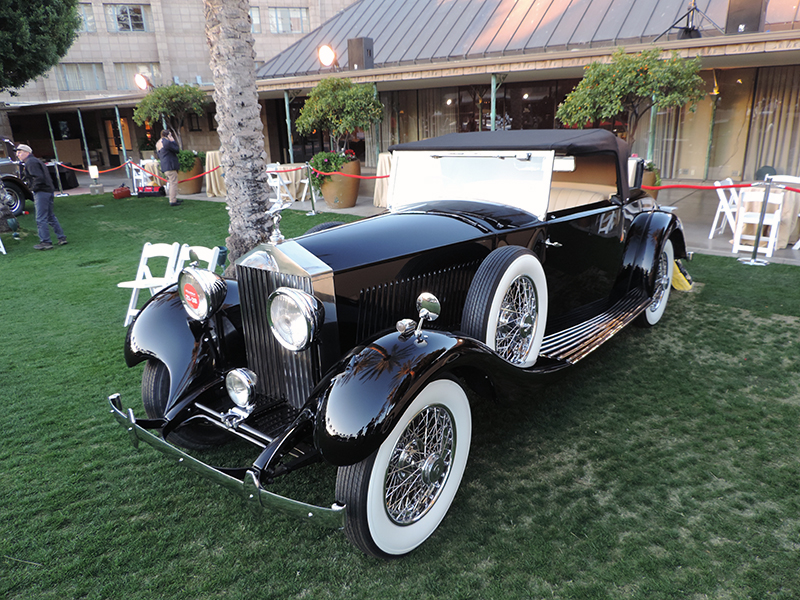
The front fender or wheel wells were a common spot for side-view mirrors, as on this 1939 Rolls Royce Roadster.
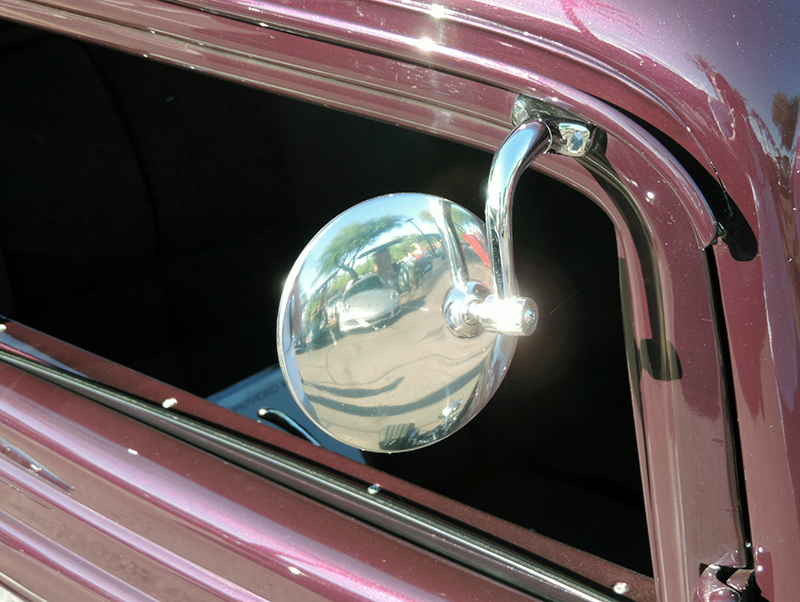
This coupe had a mirror mounted to the top frame of the door.
Federal Side-View Mirror Mandate
Until side-view mirrors were mandated for safety reasons in the 1960s, they were often not a standard item. Many buyers resisted shelling out an extra $15 or so for an extra mirror.
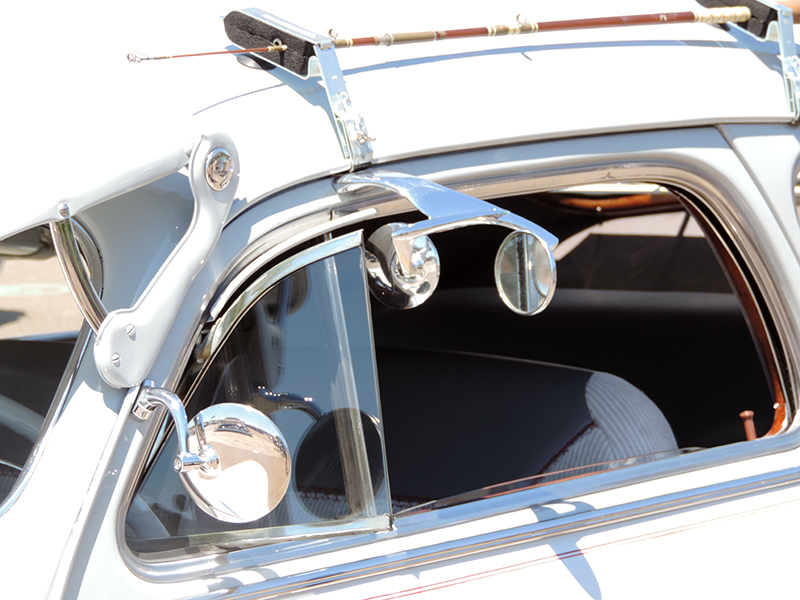
The two-part mirror was on a 1947 Chevy Fleetline and took some effort to line everything up.
The Passing Eye Mirror
One of the craziest mirrors in automotive history was the Passing Eye Mirror. While it might look like bad craftsmanship, it was quite practical. The two-mirror combination—designed specifically for use on two-land roads—was an after-market option available after the Second World War.
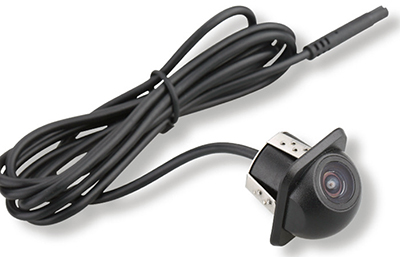
Backup side-mirror parking camera
The rear part of the mirror, the one facing forward, was adjusted to show the traffic approaching the driver. The forward part of the mirror was adjusted to show the rear mirror’s image. This allowed the driver to see what the rear mirror was reflecting.
The view was extremely useful when driving on two-lane roads and needing to pass the car or truck in front of you. A quick glance at the front mirror could reveals the approaching traffic and indicate when it was safe to pass. This made it possible for drivers to see oncoming vehicles without needing to dangerously inch toward the middle of the road.
Will Side-View Mirrors Become Obsolete?
This kind of innovation—as cool as it is—could soon be seen as very quaint. It’s not legal (and potentially confusing to drivers) to replace mirrors with side- and rear-view cameras. But they are available today and could one day help significantly improve vehicle aerodynamics.

